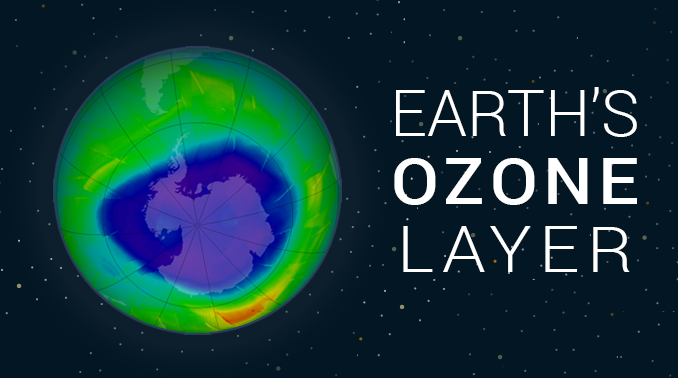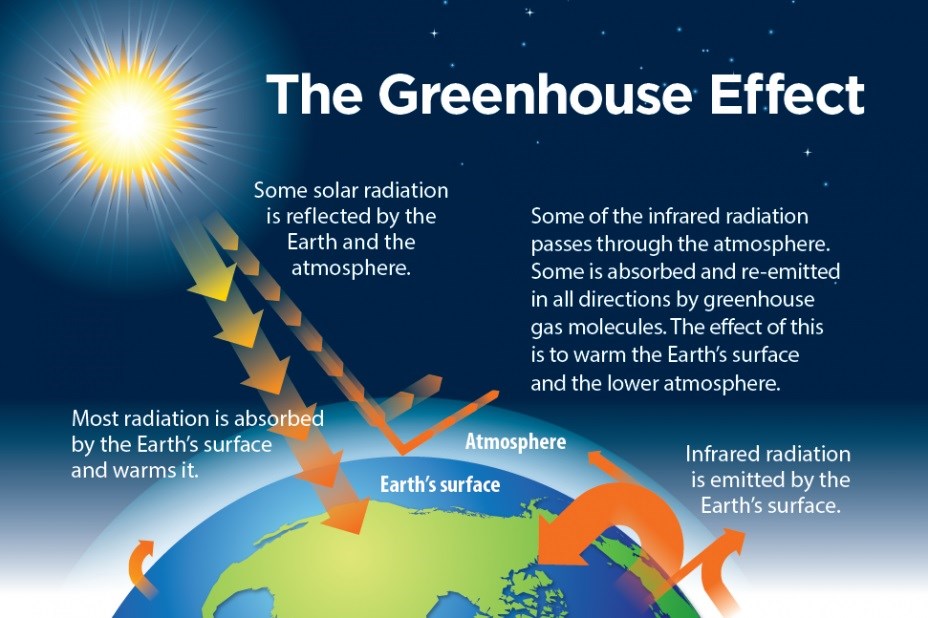Ozone Layer in 2020
Ozone Layer in 2020
A blog on the universe and the cosmos above and the nature of it determined by great scientists.
Hey everyone today I am back with a new topic Ozone Layer. So do read the whole article, Let's dive in !!!
- Layers of atmosphere
- The ozone layer
- UV rays
- Holes in Ozone and global warming
- Ozone Layer amid lockdowns
Layers of Atmosphere :
The Earth's dense atmosphere is not the same throughout. It is the densest at lower levels and we are quite lucky for that. As we move higher and higher the atmosphere/air becomes thinner and thinner and it almost impossible to breathe with the help of your lungs at really high altitudes. this is the merry reason why mountaineers trekking on peaks like Everest, have oxygen supplies to aid them.
Troposphere: The Earth's atmosphere is constituted of several layers of such air. The closest one to the Earth is called Troposphere. This region has quite a thick form of air so that our lungs are able to respire. The study also shows that this layer is responsible for holding almost 25% of the total water vapor in the atmosphere and also contributes to a total of 75% of the total mass of the atmosphere.
Stratosphere: The Stratosphere is the very second layer of the earth's atmosphere. This Layer is located above the Troposphere but beneath the Mesosphere. There is not much process related to the water cycle of the Earth which takes place in this layer. Instead airplanes fly at an altitude quite close to that of the Stratosphere and hence avoid large turbulence. Also there are specific spacecraft launched by various space organizations that help to study this layer in detail. But there is something even more special about this layer. This is the very layer of the Earth's atmosphere which has the Ozone Layer embedded in it.
Mesosphere: This is the third layer in the atmosphere and probably extends from about 50km to about 110km. Now, 110km is quite high and it is this layer that temperature starts to drop significantly. Temperature also decreases in the earlier layers but in Mesosphere it drops down quite fast. It is also reported that the upper limits of this layer are the coldest parts of the Earth's atmosphere.
Thermosphere, Ionosphere, and Exosphere: These are the other 3 layers that are found even beyond the Mesosphere. Of them, all the Thermosphere is the one beneath the other two. This is the very layer where about half of all the satellites are positioned in. This layer has a specialty, Due to variations in temperatures and many such other factors, ions [ Charged particles ] start forming in this layer. And this formulates the formation of the next layer which is the Ionosphere.
As the name suggests, there are charged particles found in this very thin layer of the Atmosphere. This layer in fact is the second last layer of the Earth's atmosphere. The exosphere is the last layer of our atmosphere. This layer is located at about the height of 190,000 Km from the Earth's surface. The air over here is so thin that you cannot breathe. Satellites are also found in this layer, but in small proportions as compared with Thermosphere.

The Ozone Layer :
The Ozone Layer or sometimes also referred as to the Ozone Shield is a part of the Stratosphere. As the name suggests, this is a part of the Stratosphere which has a quite high concentration of ozone [ O3 ] which is an allotrope of Oxygen. This is the very layer in the Earth's atmosphere which absorbs the maximum amount of sun's UV rays. We will discuss UV rays further in this blog. The Ozone layer is actually situated in the lower parts of the Stratosphere at about a height of 15 km and extends up to 34kms. There is a specific process that takes place for this ozone layer to be generated. And this process was discovered by a British scientist Sydney Chapman. From that significant discovery, now we know how ozone is formed at such high altitudes.
This process starts with the ultraviolet [ UV rays ] emitted by the sun, reaching Earth and colliding with the Oxygen molecules present at the Lower Stratosphere. Due to this collision, the Oxygen atoms get split into what are also called Atomic Oxygen. The normal Oxygen, the one we breathe is constituted of 2 oxygen atoms and is resembled by the sign O2. But the Atomic Oxygen is a split version of common Oxygen and hence Atomic Oxygen is made up of only 1 oxygen molecule and is resembled by the sign O.
Such a kind of split oxygen or Atomic Oxygen doesn't last long in nature. But not all the oxygen molecules in the lower Stratosphere get split into Atomic Oxygen. And so the Atomic Oxygen [ O ] reacts with the unbroken Oxygen [ O2 ] to form an allotrope of Oxygen, Ozone [ O3 ]. However the process does not completely stop at this point. Ozone is quite unstable in nature and when the Ultra violet rays hit the Ozone molecules, they again split into 2 individual atoms of Atomic Oxygen [ O ] and Oxygen [ O2 ]. And the process of Ozone [ O3 ] then starts again.


UV rays and global warming :
It was discovered long ago that any light is actually an Electromagnetic wave. This idea was first put up by Scottish scientist James Maxwell. From that time we have evolved over this theory, and today we know that even sunlight is an example of Electromagnetic waves. The Electromagnetic Spectrum of sunlight is constituted of many other things. Of those all one is Ultraviolet rays [ UV rays ]. These Ultraviolet rays [ UV rays ] are what actually make up about 10% of the sun's electromagnetic radiation.
These UV rays are quite dangerous. Even though less than 25% of UV rays reach Earth, they can cause severe sunburns, damage your sight, and also cause premature aging. Around 985 of the total UV rays coming towards the earth are absorbed by the Ozone layer. Without the Ozone layer, all 100% UV rays would make it up to the Earth and cause severe damage. This damage would be so serving that life would not be possible on our planet, and you wouldn't be actually reading and sharing this blog at this time.
There is also something called as an UV index. This index was created by the World Health Organization [ WHO ]. Through this index the number of UV rays are measured and assigned a danger level starting from 0 [ low ] to 11+ [ Extreme ]. Related warnings are issued to the public in case the UV index shows the danger rating moderate or high.

Ozone depletion and global warming :
Ozone depletion is the term given to the process of lowering ozone levels in the Lower Stratosphere. It was first observed in 1970 that the ozone layer is depleting by a fixed rate for the past hundreds of years. But today the situation is not quite similar. Over time scientists discovered minute holes in the Ozone layer and named the phenomena as Ozone Holes. But however they were not paid much attention to, and today these holes have grown over a large distance above the Antarctic.
Because of this harmful UV rays coming from the sun directly hit the Antarctic surface. This has over time caused large scale damage as to the loss of ice on the frozen continent. But that's not all, there are other huge problems which arise because of it. If these icebergs come into ways of ships, they can destroy them completely. The loss of ice on such a large scale has in turn increased the sea levels. Scientists also predict that there may be dangerous viruses from the past which are captured in such ice and have been dormant for centuries. If the ice melts because of direct UV rays hitting it, then it will not take much time for that ice to melt and the viruses are free once again.
But what's actually causing Ozone Holes / Ozone depletion? After researching scientists have come up with an answer. The clear answer to this is CFC. CFC stands for Chlorofluorocarbons. CFC are a particular gasses released from our home appliances like refrigerators, AC's and also from vehicles. These CFC gasses are also of the many greenhouse gasses which trap heat and are increasing Global Temperatures.
CFC gasses are indestructible and inflammable. These gasses rise up in the atmosphere and stay there for quite a long period. When these CFC gasses reach the stratosphere, they are also exposed to the UV rays and hence breakdown. From this process Chlorine atoms [ Cl ] are released in the Stratosphere. Chlorine [ Cl ] atoms then slowly destroy Ozone [ O3 ] slowly breaking down the ozone layer and forming holes in them.
This is how holes are formed in Ozone layer and with the increase in greenhouse gasses are planet is becoming hotter and hotter.

Ozone Layer amid lockdowns :
You must have heard the news about the Ozone layer and the Ozone holes healing amid the lockdowns. Well, that's true and really good too. Due to this Corona pandemic, many of the countries are practicing lockdowns and people and staying at home for the safety of their own and that of others. Due to this the number of vehicles used has also decreased significantly also decreasing the amount of CFC released in the air. Because of all this there are fewer components damaging the Ozone layer and hence it is slowly healing up

So to all my readers a vote of thanks for practicing these lockdowns.
So friends in my next blog I will be discussing about Sunspots, so be sure come back for reading it. You'll can also check out our blogs on 01physics.blogspot.com
Till then STAY HOME STAY SAFE !
Comments